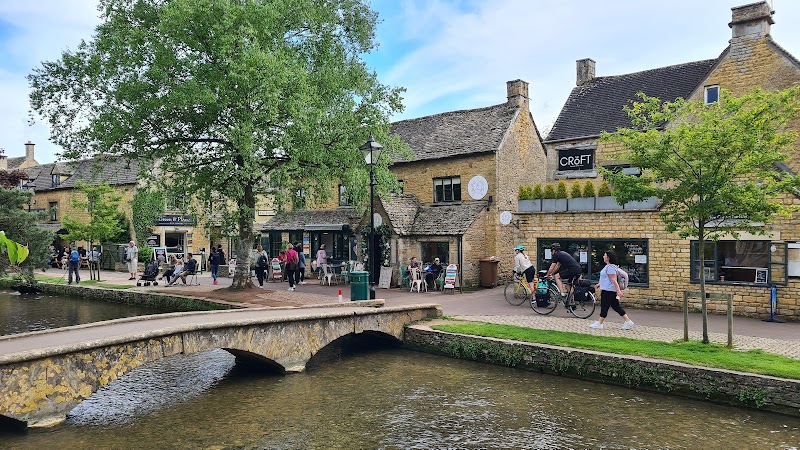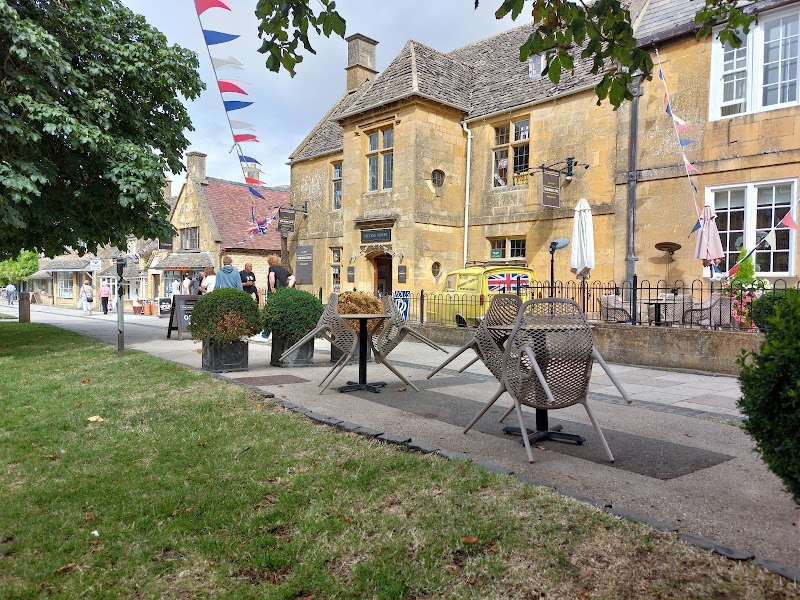Welcome to Cotswolds - An Enchanting Rural Haven
Unveil the charm of the Cotswolds, an idyllic patchwork of lush green fields and quaint stone cottages that covers a sprawling 800 square miles. This rural wonderland is home to some of England's most charming villages and towns. From the dreamy spires of Oxford to the enchanting Broadway Tower, and the romantic Bourton-on-the-Water, the Cotswolds, presented in our comprehensive tourist map of England, offers a unique experience that combines the charm of traditional England with breath-taking natural beauty.
Embark on an adventure through a destination that exists outside the realm of time. To help you navigate this vast area and make the most of your journey, we've put together a detailed Tourist Map of Cotswolds. Consider this map your magical compass, guiding you through the winding lanes, hidden gems, and historical treasures of the Cotswolds. It's the perfect tool to help you plan your trip and ensure you don't miss out on any of the wonders this idyllic rural haven has to offer.
" Booking.comUnveiling the Charm of the Cotswolds
Known for its rolling hills and quaint English villages, the Cotswolds is a destination that invites you to step back in time and soak in the charm of traditional England. From the timeless allure of Chipping Campden to the fascinating history of Blenheim Palace, there's an endless array of attractions to explore in this captivating region, as seen on our map of Western Midlands.
Exploring the Quintessential Villages
What truly sets the Cotswolds apart are its picturesque villages, each offering a unique glimpse into England's rich heritage. Stow-on-the-Wold, with its centuries-old market square and Cotswold stone buildings, exudes an ageless allure that takes you on a journey through time. Nearby, the village of Bibury, described by William Morris as 'the most beautiful village in England', captivates with its charming Arlington Row cottages and thriving trout farm.
Delving into History at Blenheim Palace
History enthusiasts will be fascinated by Blenheim Palace, a UNESCO World Heritage Site with an illustrious past. As the birthplace of Sir Winston Churchill and home to the Dukes of Marlborough, Blenheim Palace is not only a masterpiece of Baroque architecture but also a living testament to England's grand history. Before leaving, make sure to wander through the palace's stunning formal gardens and vast parkland, where you can enjoy breathtaking views of the Cotswolds countryside.
Experiencing the Cotswolds' Natural Beauty
While the Cotswolds' villages are undoubtedly charming, the region's natural beauty is equally impressive. The Cotswolds Area of Outstanding Natural Beauty (AONB) is the largest in England and Wales, offering endless opportunities for outdoor adventures, as highlighted in our Southwest of England tourist map. Hike along the Cotswold Way, a 100-mile footpath that offers stunning views of the Severn Valley and the Malvern Hills, or explore the Wildfowl and Wetlands Trust at Slimbridge for a unique wildlife experience.
Finding Inspiration in the Arts
The Cotswolds has long been a source of inspiration for artists and writers, and it's not hard to see why. From the Arts and Crafts movement in Chipping Campden to the literary legacy of Stratford-upon-Avon, the birthplace of William Shakespeare, the region is steeped in creative history. Visit the Gordon Russell Design Museum in Broadway to discover the work of one of England's most influential designers, or enjoy a performance at the Royal Shakespeare Theatre for a truly memorable cultural experience.

Practical Information for Your Cotswolds Journey
Transportation and Mobility
While the Cotswolds is a rural area, it boasts an efficient public transportation system. Buses are the primary mode of public transportation, connecting different villages and towns across the Cotswolds. The major bus companies include Pulhams Coaches, Stagecoach and Johnsons Excelbus, offering regular services from early morning till late evening. If you prefer to drive, consider renting a car for a more flexible schedule. However, be prepared for narrow country lanes and occasional livestock on the road. For a more eco-friendly option, cycling is a great way to explore the Cotswolds, with a number of well-signposted cycling routes available.
Schedules and Prices
Public transportation operates generally from about 7AM to 10PM, with reduced services on Sundays and public holidays. Bus fares vary depending on your journey, but a typical single journey within the Cotswolds might cost around £2-3. If you're planning to use the bus services frequently, consider getting a day pass for about £8. Car rental prices start from around £30 per day, with additional costs for insurance and fuel. Bicycle rentals can range between £15 to £30 per day depending on the type of bike.
Safety Tips
While the Cotswolds is generally safe, it's always wise to take precautions when travelling. If you're driving, always adhere to the speed limits, especially on narrow country lanes. Be aware of farm animals and wildlife crossing the roads. If you're cycling, always wear a helmet and high-visibility clothing. Always respect the countryside code, keeping gates closed and sticking to designated paths to protect the area's natural beauty.
Practical Recommendations
The Cotswolds is beautiful throughout the year, but each season offers a different experience. Spring is a wonderful time to see the colourful wildflowers bloom, while summer brings longer days to explore. Autumn is perfect for witnessing the changing colours of the landscape, and winter, though colder, offers unique events such as Christmas markets. Regardless of the season, always dress in layers and bring waterproof clothing, as the English weather can be unpredictable. Additionally, make sure to book your accommodation in advance, especially during peak seasons, to avoid disappointment.

Frequently Asked Questions
1. What are some unique culinary experiences in the Cotswolds?
The Cotswolds offers a range of delightful gastronomic experiences, from locally brewed ales to traditional cream teas. For a unique culinary adventure, consider visiting a local farm shop like Daylesford Organic Farm, where you can buy freshly harvested produce. Don't miss the opportunity to savour a Cotswold cream tea, which is a local specialty featuring scones, jam, and clotted cream.
2. How can I experience the Cotswolds' rich literary heritage?
The Cotswolds has a rich literary heritage that has inspired many famous authors. Visit the village of Slad, the setting for Laurie Lee's "Cider with Rosie", or walk in the footsteps of J.R.R. Tolkien in the ancient woodlands of Puzzlewood. You might also enjoy a visit to the home of William Morris in Kelmscott Manor, which is now a museum dedicated to his work.
3. Are there any unique festivals or events in the Cotswolds?
Yes, there are numerous festivals and events that take place throughout the year in the Cotswolds. The Cheltenham Literature Festival and the Cotswold Show and Food Festival are standout events, offering unique experiences of culture and local cuisine respectively. Remember to check the local calendar for the exact dates as they can change each year.
4. What outdoor activities can I enjoy in the Cotswolds?
Outdoor enthusiasts will be spoilt for choice in the Cotswolds, with activities ranging from hiking and cycling to horse riding and fishing. The Cotswold Way offers over 100 miles of scenic walks, while the region's numerous lakes and rivers provide opportunities for boating and fishing.
5. Are there any specific dress code or etiquettes to follow while visiting Cotswolds?
There's no specific dress code for visitors to the Cotswolds, but it's advisable to wear comfortable clothing and sturdy footwear if you plan to explore the countryside. As for etiquette, it's always appreciated if you respect the local environment by not littering, keeping noise levels down and adhering to public footpaths.
6. Can I visit the Cotswolds with my dog?
Yes, the Cotswolds is a very dog-friendly destination. Many pubs, restaurants, and shops welcome dogs, and there are plenty of dog-friendly walks and parks. However, always remember to keep your dog on a lead around livestock and clean up after them to maintain the beauty of the region.


